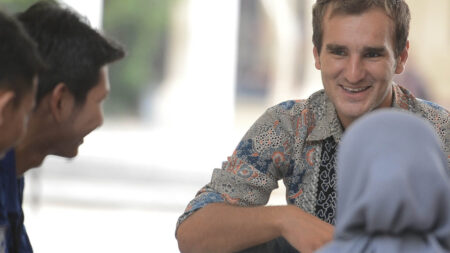Marilyn Smith, the founder of En-Act, sits down with Going Green to share her journey working in renewable energy education. Marilyn is a science communications specialist with 15 years experience presenting news and information to non-scientific audiences (e.g., policy makers, the general public) via various media.
Having served for three years as Chief Editor of the International Energy Agency (IEA), she has a broad understanding of the energy sector and related issues. Although her forté is content development (i.e., written and spoken word), Marilyn has developed skills in related areas such as photography, graphic design, web architecture and publication processes.
Marilyn, Tell us a little bit about you and your background:
I’ve been a writer/editor in the energy sector for about 15 years, including a stint as Chief Editor at the International Energy Agency. During this time, I’ve come to appreciate: a) how little people know about energy; and b) how what a poor job many energy organizations do in communicating to public audiences.
Also, while those of use in the western world use energy without giving it a thought, it developing countries lack of it stymies personal health and well-being and economic development. Hence, I launched ‘The Energy Action Project (EnAct) with the dual aim of raising awareness about energy poverty and boosting energy literacy.
What is a fun fact about you?
I was the first baby born in my home town of Red Deer, Alberta, Canada — arrived 48 minutes after midnight on 1 Jan 1964. Picture in the paper, etc. etc., 
Why do you think climate change and sustainability is such an important topic today?
Without a sustainability movement, climate change will accelerate rapidly in ways that will carry huge economic and social costs — for countries and for citizens. A key aim of EnAct is to help people understand the critical role of energy in the climate change and sustainability stories. Buildings, for example, account for ~40% of global energy demand and a similar share of CO2 emissions — and we are adding 6.1 bln square meters of new floor space annually. That means as much as how we travel, we need to rethink how much ‘space’ we need to live or work in, and how to slash the energy demand of buildings.
What do you envision your industry looking like 10 years from now?
As science-oriented multi-media project, I think our industry faces huge challenges. Getting science content into mainstream media is difficult; sufficiently digging into the complexity of the global energy challenge is even more difficult. Additionally, we need to find creative ways to engage people in the energy story and make it relevant to them. Funding is our main challenge: the type of content we want to do — e.g. documentary films, photo essays, podcast — is costly to produce. Grants are competitive and often for relatively small amounts. If we go to large energy companies to look for support, we risk losing face with our audiences.
What can the average person do to make a difference?
Learn about energy and the many ways you can change your own energy habits and your lifestyle to reduce consumption. Become an energy activist — campaigning for to ensure that a clean energy transition is also fair to low-income families. That could mean volunteering for NGOs or writing letters to policy makers. Financially support innovative solutions to energy poverty or participate in micro-credit programmes that help people in developing countries invest in energy systems.
Watch En-Acts documentary “Darkness”
Going Green wants to thank Marilyn Smith for sharing her passion in renewable energy education.
Going Green, hosted by Dylan Welch, interviews leading experts in cleantech, sustainability, media, finance, and real estate on the Going Green podcast. Tune in and subscribe to the podcast on Apple or Spotify to listen to interviews with leading cleantech and sustainable experts. If you are interested in being featured on Going Green, click HERE.






